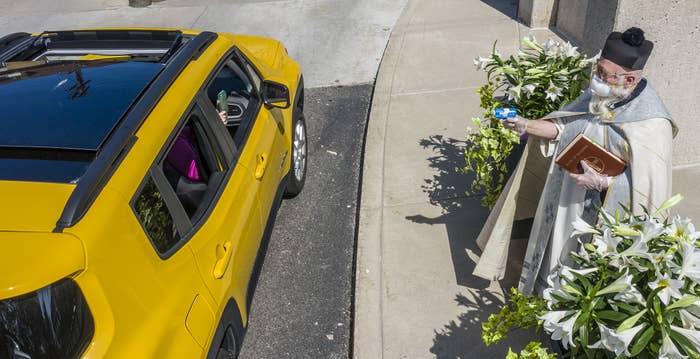#FIGHTFOR25
BE REALISTIC DEMAND THE IMPOSSIBLE!
Joseph Zeballos-Roig 5/16/2020
Progressive entrepreneur Joe Sanberg says it's time to pay workers a $25 minimum wage.
"[Coronavirus] has thrown everything into disrepair and uncertainty — this is the moment to rebalance things," Sanberg told Business Insider.
A $25 minimum wage won't become a reality anytime soon, but economists and researchers are starting to understand more of the effects around boosting pay for workers
A progressive entrepreneur says it's time to raise wages for workers who have been squeezed by an economy that's left many of them behind.
It's not Fight for $15. Instead, Joe Sanberg believes it should be Fight for $25.
Sanberg, a Los Angeles-based investor and co-founder of online banking service Aspiration, recently made the case for a $25 minimum wage over Twitter.
"We must protect all Americans during this pandemic, both medically & financially. Those who still have jobs & show up to do them at great risk to themselves should be able to afford life's basic needs," he said in a May 6 tweet. "This shouldn't be controversial. Plus, it's good for the wider economy."
—Joe Sanberg (@JosephNSanberg) May 6, 2020
In an interview with Business Insider, Sanberg said the US is entering a once-in-a-generation moment as a result of the coronavirus pandemic.
"We're at a crossroads in American society unlike perhaps anything we've seen since the Great Depression," the anti-poverty advocate said. "We're gonna define the kind of economic system we'll have for the next century. [Coronavirus] has thrown everything into disrepair and uncertainty — this is the moment to rebalance things."
Read more: Buy these 13 tech stocks that are abnormally disconnected from Wall Street's expectations for profit growth and poised to rocket higher, Credit Suisse says
Nationally, the minimum wage stands at $7.25 and Congress hasn't bumped it upward since 2009 — the longest stretch without a wage increase for hourly workers from the federal government. Over much of the last decade, state and municipal governments have taken the lead to increase wages on their own, per the Pew Research Center.
Scores of states and cities have rolled out plans to raise the minimum wage to $15 an hour, ABC News reported. New York City and Seattle are among the cities that already mandate that businesses pay the rate.
The Congressional Budget Office projected last year that raising the minimum wage would shed 1.3 million jobs from the economy, but also lift an equal amount of people out of poverty.
Opponents have attacked the idea of a $15 minimum wage as a job killer. Sanberg says he doesn't buy that. He argues that people with more money in their pockets would ultimately spend more, culminating in higher revenues for companies and more employment.
Read more: Warren Buffett calls the prospect of negative interest rates the 'most interesting question I've seen in economics.' We had 5 financial experts weigh in on how they could impact the investing world as we know it.
"The problem with that analysis is it takes a static picture of the present revenue level of businesses, but that's not what happens when everyone earns a living wage," he said. "They spend money, which generates more sales for companies, and they can hire more people."
A $25 minimum wage won't likely become a reality anytime soon, but researchers are beginning to understand more of its effects as wages for workers steadily increase across the country.
An analysis from the Boston Fed and a group of MIT economists published last year found raising the minimum wage leads consumers to spend more, particularly in areas where a greater share of workers are paid hourly.
Another study published last year in The Quarterly Journal of Economics scrutinized the effects of 130 minimum wage increases since 1979, and found that a decline in jobs that paid below the wage were counteracted by the creation of additional jobs that paid a little higher than the new minimum wage. Most of those wage increases, however, were modest.











